E1.2 Construct three-dimensional objects when given their top, front, and side views.
Skill: Visualizing Three-Dimensional Objects from Different Perspectives
In order to construct a good mental representation of three-dimensional objects, students must be able to visualize them as decomposed two-dimensional shapes in the two-dimensional space and as three-dimensional objects in three-dimensional space.
 Image there is a square based prism. Three lines point from the prism to different figures. The first is made up of three rectangles and two squares. Above the figure is written: development. The second figure is made up of a prism surrounded by points. Above the figure is written: Representation on a triangular dotted paper. The third is made up of three columns. The first contains a rectangle representing the front view of the figure; The second contains a rectangle representing the side view; the third contains a square representing the top view.
Image there is a square based prism. Three lines point from the prism to different figures. The first is made up of three rectangles and two squares. Above the figure is written: development. The second figure is made up of a prism surrounded by points. Above the figure is written: Representation on a triangular dotted paper. The third is made up of three columns. The first contains a rectangle representing the front view of the figure; The second contains a rectangle representing the side view; the third contains a square representing the top view.
To help support students in developing the ability to move from representations in one dimension to another and to consolidate their knowledge of the properties of three-dimensional objects, teachers can use various construction activities (for example, constructing a model using cubes, constructing the shell of a three-dimensional object from a given net) and various representation activities (for example, drawing the net of a three-dimensional object, associating a three-dimensional object with its net or its front and side views and from the top).
Source: translated from Guide d’enseignement efficace des mathématiques, de la 4e à la 6e année, Géométrie et sens de l'espace, Fascicule 1, p. 29-30.
Skill: Building Three-Dimensional Objects from Front, Side, and Top Views
The interlocking cubes can be used to build a three-dimensional object. First, the student builds the base of the three-dimensional object using the top view.
Top view
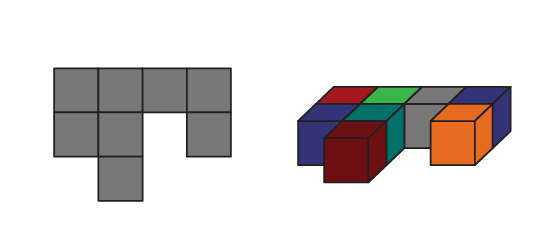
Then, by looking at the side view, the student determines the maximum number of floors of cubes.
Side view
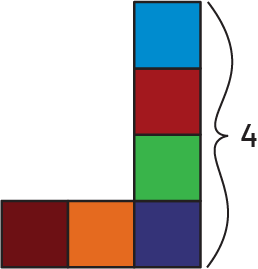
The front view allows you to determine the exact number of floors.
Front view
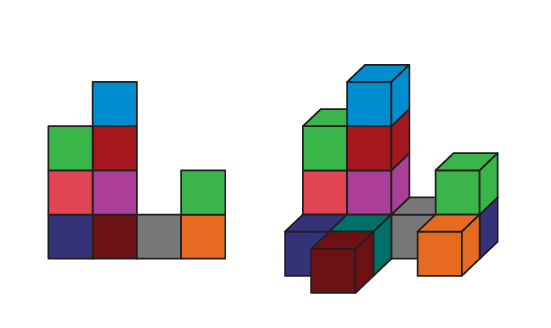
Three-dimensional object constructed from front, side, and top views.
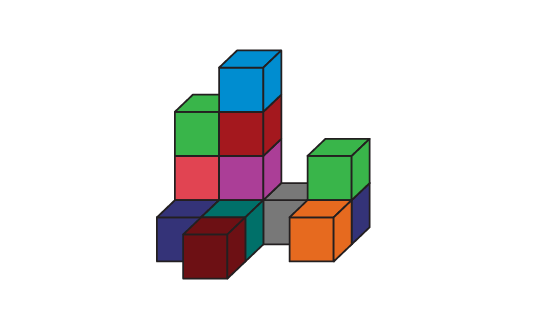
Source: translated from En avant les maths!, 6e année, CM, Sens de l’espace, p. 3.
Knowledge: Three-Dimensional Object
A three-dimensional object can be represented using a front view, a side view, and a top view.

Source: translated from En avant les maths!, 6e année, CM, Sens de l’espace, p. 3.
Knowledge: Top View, Front View, Side View
Architects and builders use plan (top-view) and elevation (side-view) to guide their construction. Visualizing objects from different perspectives is an important skill used in many occupations, including all forms of engineering.
Source: The Ontario Curriculum. Mathematics, Grades 1-8 Ontario Ministry of Education, 2020.
Top view of the three-dimensional object
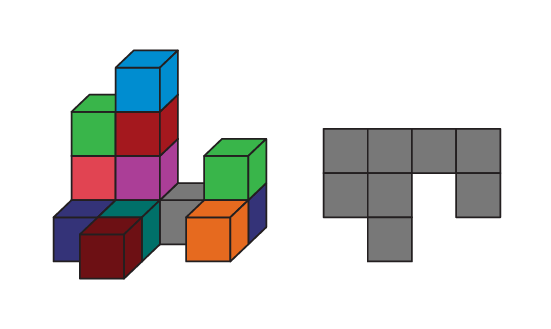
Front view of the three-dimensional object

Side view of the three-dimensional object
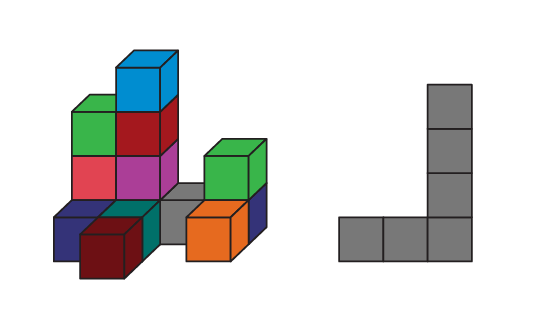
Source: translated from En avant les maths!, 6e année, CM, Sens de l’espace, p. 3.
